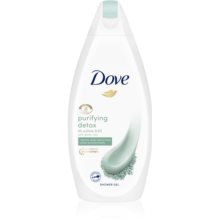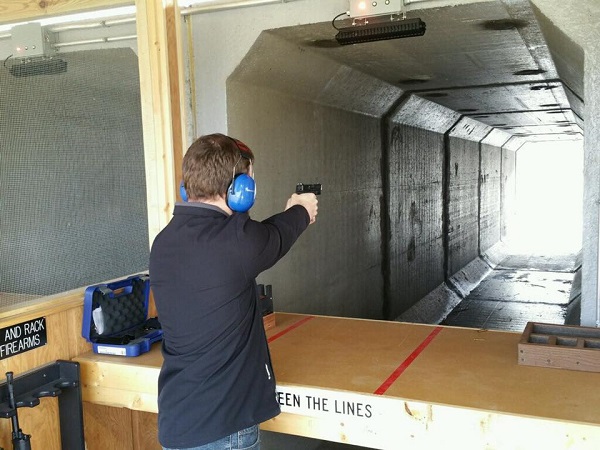
You've found the right place if you're looking for a Ruger LCP 2 Review. This article will explain the features of this pistol. It includes its accuracy, length, controls, and other aftermarket goodies. Learn how to get the best deal on this gun. This article will give you the complete guide to Ruger LCP2.
Length
Ruger LCP II is slightly larger than its predecessor. It measures 5.17 inches in length, and 3.71 inches in height. This slight increase in length and width may help shooters with control and accuracy. The pistol is 10.6 ounces in weight and can hold six+1 rounds 380 ACP. This pistol is great for anyone looking for a reliable backup gun or an even more powerful weapon.
The LCP II's short trigger, inner trigger safety and improved grip surface are some of its features. It accepts all LCP II accessories, including magazines chambered in.380 Auto. Ruger LCP II is equipped with adjustable sights, a recessed-hammer and an expulsion lever. The LCP II is an excellent concealed carry gun choice thanks to these features.

Accuracy
Ruger LCP2's trigger is innovative and the major news in the LCP line. It's an enclosed hammer-fired trigger that has a trigger break point behind solid walls and a plastic pyramid over-travel stop. For the best shots, the trigger has a pullweight. While the trigger is not ideal for shooting with, it can be improved through practice.
Ruger LCP II accuracy tested revealed a center mass range of approximately ten meters, with very minimal muzzle flip and a good trigger. The accuracy of the gun is amazing for a small pocket pistol. The accuracy was good even at long ranges. Excellent power data was also displayed by the LCP II. Shooting a five to ten yard group in a timed test with HPR 90-grain rounds gave us a 3.8 inch group.
Controls
The Ruger LCP II has the same controls as its predecessor, the LCP, except that it has a new slide with serrations. The recoil spring has been softened, and the grip is made of a rougher material with a more aggressive finish. The internal hammer in the gun can be cocked during slide cycles. This trigger pressure is not required to fire the gun. Ruger LCP II comes with a notch which allows for visual inspection of the contents.
The LCP pistol is intended for concealed carry. It is small and light, making it easy to conceal. However, the trigger pull can sometimes be irritating. The Ruger LCP II has improved controls and is now a top seller. Find out how Ruger LCP 2 reviews compare and which pistol is the best for you. Ruger LCP pistols might not be right for you.

Aftermarket goodies
Ruger LCP II pistol owners can add aftermarket parts to enhance the firearm's performance. You can change the look of your gun by purchasing aftermarket parts. It all depends on the individual, right? An upgraded gun can be a great way for you to showcase your style and can even be fun!
The Ruger LCP II has a revised trigger. The enclosed hammer-fired trigger allows for single-action shooting. The pistol features a plastic pyramid trigger stop with over-travel stop, and a finger rest at the bottom. A new grip texture makes it easier to trigger the gun. Ruger LCP II is also equipped with a grip that has been improved and features a better trigger.
FAQ
What do I need to know about hunting?
To hunt well, you need to be able understand how the animal moves and its habits. Also, learn how to avoid getting hurt.
It is vital to learn the laws governing hunting in your particular state. Some states allow certain types, while others prohibit hunting completely.
Other factors include terrain and weather conditions.
Consider whether hunting is something you want to do alone or with friends.
Most people who hunt prefer to hunt with someone else. Because it helps you concentrate on your goal. If you are by yourself, you might miss your shot.
Hunting requires planning. Planning is essential to ensure you hunt in the right place.
Your weapons must also be prepared. Before you leave for home, make sure to clean and check that your guns are functioning properly.
When hunting, you should always wear appropriate clothing. Be prepared for weather changes and terrain.
Always ensure you have enough water and food. For any emergency, you should always have extra ammunition and supplies.
You should never leave anything behind. You might lose it or damage it.
When you are ready to start hunting, you should choose a safe location that has no predators nearby.
You must follow all the regulations set out by government. These regulations protect wildlife as well as humans.
How popular is hunting in America?
Hunting has become a beloved American pastime. Americans spend over $8 billion each year on hunting equipment and supplies. Average hunters spend around $1,000 each year.
Hunting is also a recreational sport for many who hunt to have fun and relax. There are approximately 50 million hunters in America. This includes both men as well as women.
Hunters are from all walks of the life. They range from young children to older adults. Some hunters are experienced while others are new to the sport.
Most hunters want to hunt because they love being outdoors. Hunting allows hunters to experience the joy of connecting with nature.
Hunting can also be very social. Hunting is often done in a group. Sometimes, these groups include family members and friends as well as co-workers.
Hunting has become a popular sport for hunters. Hunting has become a competitive sport. Hunters compete against each other to see which species they can hunt.
Also, there are competitions among states where hunters attempt to beat the previous record of the largest deer kill. These records are typically set by professional hunters.
How much does it cost to hunt?
Price of a hunting trip will vary depending on where your are located, the species of wildlife that you wish to capture, and the animal you intend killing.
In general, a two-person hunting party will cost between $500-$1,000 per head. This includes accommodation, food, gas, equipment, licenses, etc.
Certain areas may have higher prices than other. If you plan to hunt during peak seasons, such as fall turkey season, expect to pay even more.
Statistics
- - Percent of residents with paid hunting licenses: 0.7%- (stacker.com)
- Less than 1% of Hawaii's population has a hunting license. (stacker.com)
- Thanks to the 1937 Pittman-Robertson Act, an 11% excise tax was placed on the sale of firearms, which were then used for conservation. (stacker.com)
- Indiana, for example, saw a 28% jump in turkey license sales during the first week of the season. (stacker.com)
External Links
How To
How to find the best hunting spots within the forest
First, you need to decide what kind and type of game to hunt when hunting. You will not find the right place to catch your desired animal if there are many species of birds and animals that live in forests.
There are two main types of animals that live in the forest: large mammals or small mammals. Large mammals include deer and elk as well as moose, caribou bear, wolf, and wild hare. Small animals include rabbits, squirrels, hares, grouse, pheasant, partridge, quail, woodcock, pigeon, and dove. Each species requires a specific habitat. You must ensure that you pick the right location before venturing out into the woods. You can check your local area's flora and fauna list online to see whether there are any endangered species living near your home. You must ensure that your hunting area is protected from poaching if it's a species you wish to hunt.
When hunting a particular species of animal, you will need to learn how to properly set it up. It's important to use the correct equipment because it affects the success rate. A rifle that can fire accurately at close range is ideal for hunting rabbits. A rifle that can fire long distances will be necessary for hunting larger animals such as deer. Also, you'll need some sort of bait to attract the prey. Some people recommend placing meat into a trap to lure animals, while others prefer peanut or corn butter. No matter what method you use, you must adhere to the laws and regulations in the country you are hunting.
You need to consider many factors when choosing a hunting location, including weather conditions, terrain, vegetation and wildlife population. Safety is the most important thing when hunting. Be sure to avoid dangerous animals and predators when hunting in a remote area. Also, avoid hunting areas that are crowded, especially during hunting season. You should also take note of the seasons when hunting because this will help you determine the best times to hunt.
The weather is also important when you are choosing a hunting spot. This is vital as it affects the number and species of animals that are likely to be present. The ground is covered in snow when the temperature drops to below zero Celsius. It can be difficult to find deer, bears and wolves under the snowy layer, so it is often hard to spot them. You might spot them if the weather is clear. The temperatures in summer are above 30 degrees Celsius, which means the sun warms the Earth. To escape heat, animals seek shelter. This makes it easier to locate them.
Also, consider the terrain. Flat surfaces make it easier to run and walk through the area. However, uneven surfaces can be more difficult. Steep slopes can be difficult to climb and streams and rivers can often create muddy trails. So that you can navigate the area easily, try to find a spot without any obstacles.
Look at the vegetation, as well. Plants vary in size, density and depend on their environment. Large trees provide shade and cover for smaller animals, while shrubs and bushes offer hiding places for smaller animals. If you want to find large animals, you should look for dense vegetation.
Last but not least, be mindful of how many animals you are allowing into your home. Statistics show that there are over 100 million deer in North America. They eat almost half of the food produced by crops, and they play an essential role in maintaining biodiversity. They can also become pests and endanger the ecosystem if their numbers grow too fast. Therefore, it is vital to keep the population balanced.